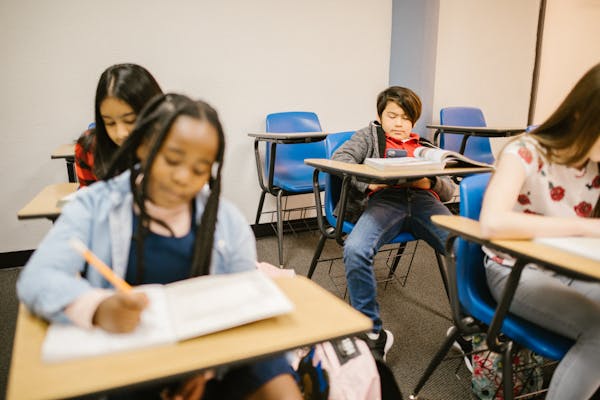Introduction
In today’s digital age, it’s common for students to have their phones on them at all times. While some teachers may see this as a distraction in the classroom, others recognize the potential benefits of incorporating technology into their lessons. But what happens when those phones become more of a hindrance than a help? Are teachers allowed to take your phone? It’s a question that has sparked debate among educators and students alike. In this blog post, we’ll dive into the research, weigh the pros and cons of different policies, and offer best practices for teacher-student phone use in schools. So sit back, grab your own phone (unless you’re currently in class!), and let’s explore this topic together!
What the Research Says
Research on the topic of teachers taking away students’ phones is a mixed bag. Some studies suggest that students who are allowed to use their phones in class can be distracted and perform worse academically than those who are not permitted to have them. This can lead to lower test scores, decreased attention spans, and reduced engagement with classroom content.
On the other hand, some educators argue that smartphones can actually enhance learning by providing access to educational apps, research materials, and real-time collaboration tools. In fact, many schools now encourage the use of mobile devices as part of their curriculum.
Furthermore, there is also concern about privacy issues when teachers take away students’ phones without proper justification or consent from parents/guardians. It’s important for schools to create clear policies around phone usage so everyone understands what is expected of them.
More research is needed before we can definitively say whether teachers should be allowed to take away student phones or not. It ultimately depends on individual school policies and how they balance potential distractions with opportunities for enhanced learning through technology.
Pros and Cons of Teacher Phone Policies
Teacher phone policies have their fair share of pros and cons. On one hand, allowing students to use their phones during class could lead to distractions, which ultimately hinder the learning process. It’s not a secret that smartphones are incredibly addictive and can take away valuable time from lectures.
On the other hand, completely banning phone usage during school hours may seem too restrictive for some students. In fact, some teachers argue that phones can be used as tools for research or quick access to notes and educational resources.
Another potential downside of strictly enforcing a no-phone policy is that it might create an atmosphere of distrust between teachers and students. This could result in resentment towards educators who are perceived as overly strict or unfair.
However, having clear guidelines on when phone usage is appropriate (such as designated breaks) can help prevent confusion or disagreements among both parties.
It’s up to individual schools and teachers to weigh the benefits and drawbacks of various phone policies in order to find what works best for them.
Best Practices for Teacher-Student Phone Use in Schools
Best practices for teacher-student phone use in schools are essential to ensure that students remain focused on their education while still being able to use technology responsibly. One of the best ways to achieve this is by having clear guidelines and expectations regarding cell phone usage.
Teachers should clearly communicate these guidelines at the beginning of each school year, outlining when phones can be used and when they cannot. Students should understand that phones are not allowed during lectures or tests but may be used during breaks or free time.
Schools may also consider implementing a “”phone parking lot”” where students place their phones in designated areas before class begins. This helps minimize distractions and ensures that all students have equal access to educational materials without interruption from notifications or incoming calls.
It’s important for teachers to model appropriate behavior as well, such as refraining from using their own devices during instructional time. By doing so, they set an example for students on how to balance technology with learning.
Implementing best practices for teacher-student phone use can help promote responsible digital citizenship while minimizing distractions in the classroom.
Conclusion
After analyzing the research, evaluating the pros and cons of teacher phone policies, and considering best practices for teacher-student phone use in schools, it is clear that the issue of whether teachers are allowed to take students’ phones is a complex one. While some argue that it can be beneficial for minimizing distractions and promoting focus on learning, others believe that it can infringe on student rights and hinder communication between students and their families.
Each school must decide what policy works best for its particular environment. However, one thing is certain – open communication between teachers, administrators, parents/guardians, and students themselves is key to ensuring safe and effective use of technology in the classroom. By working together as a community to establish clear guidelines for phone use in schools, we can help promote an optimal learning experience while still respecting individual rights and needs.

